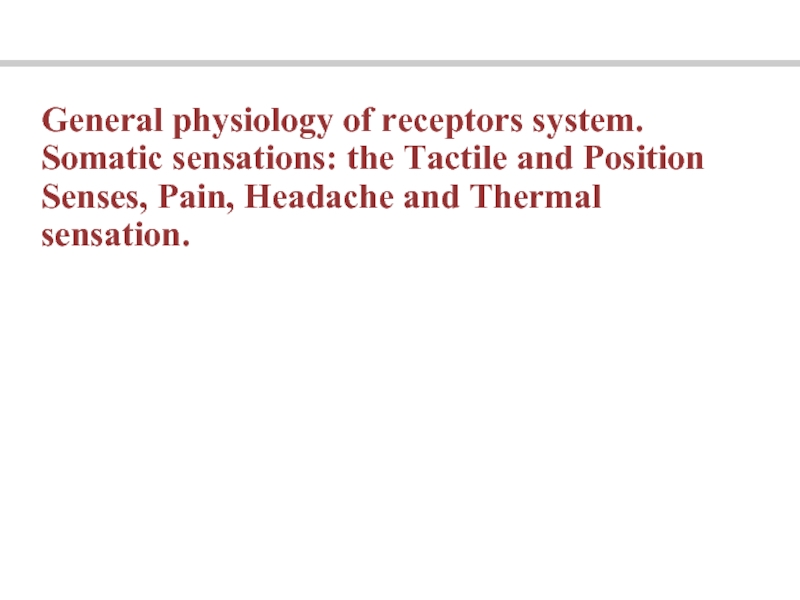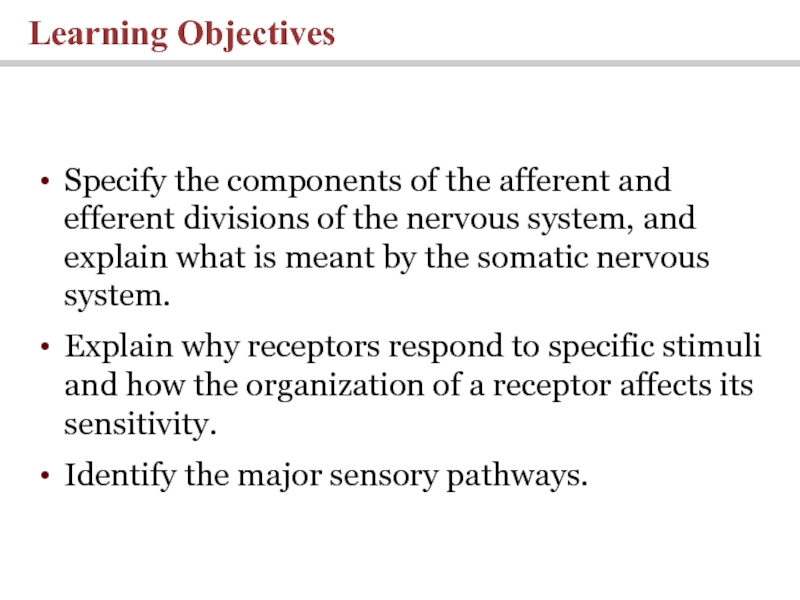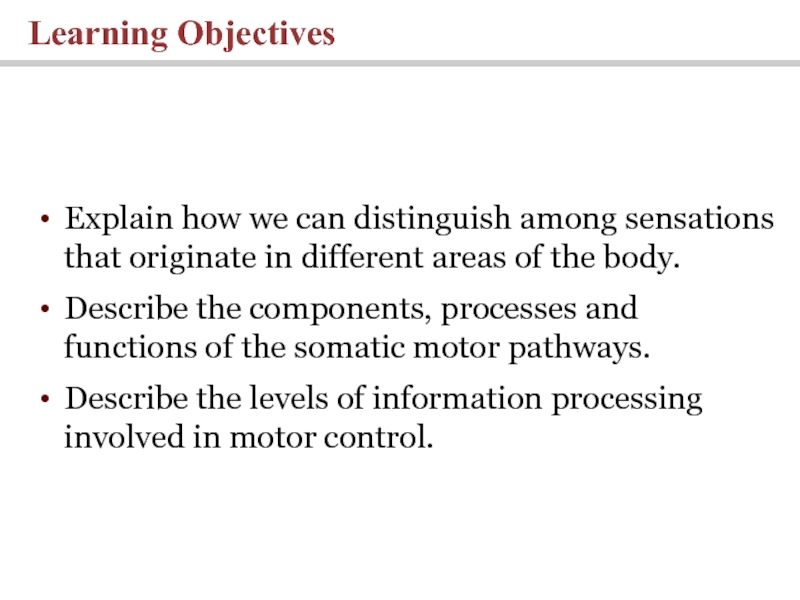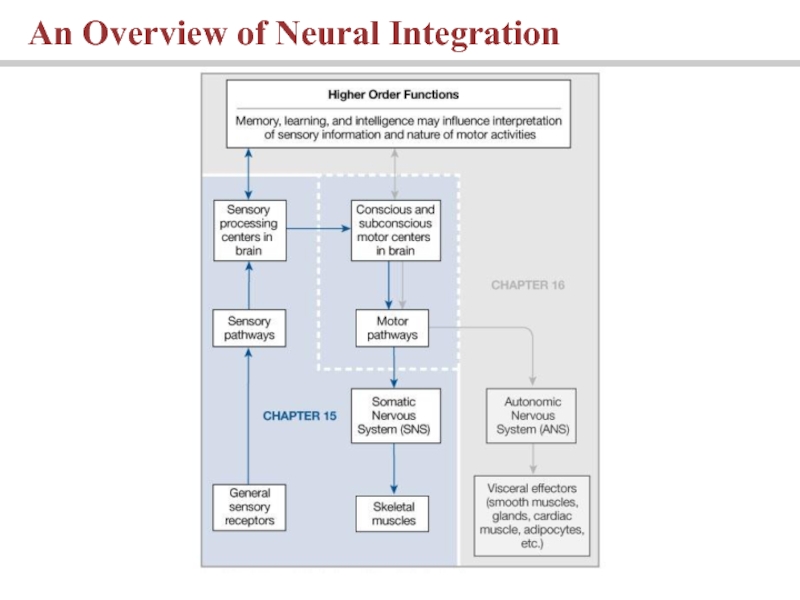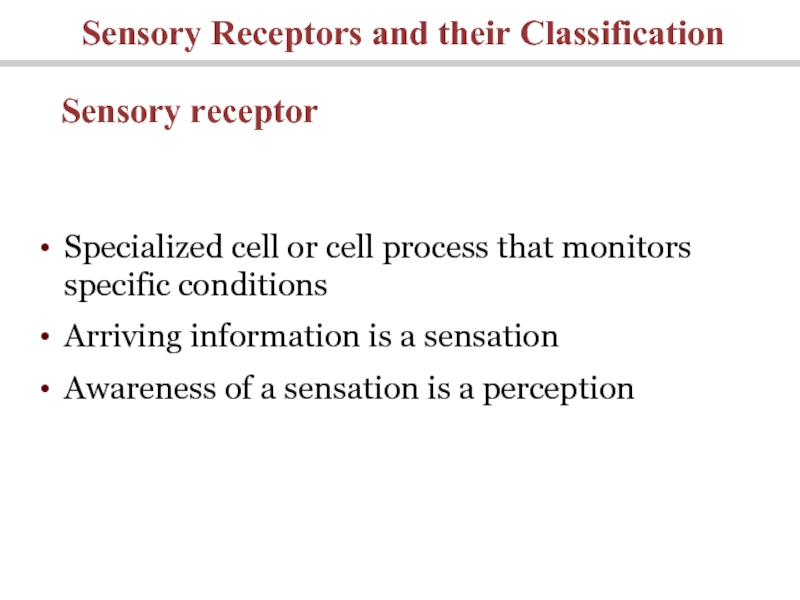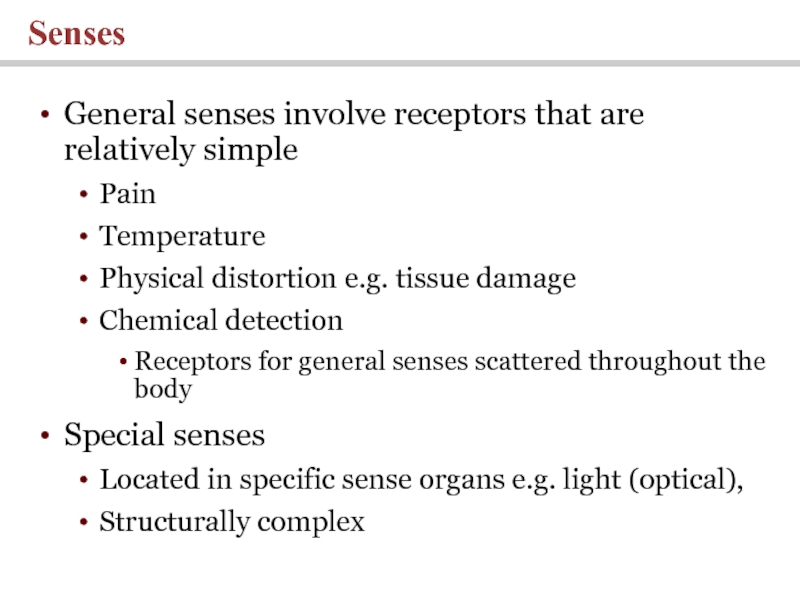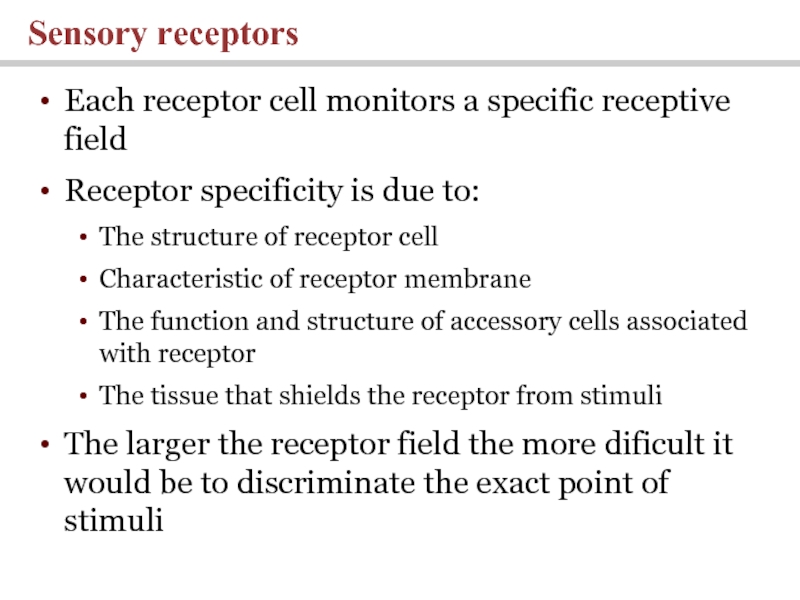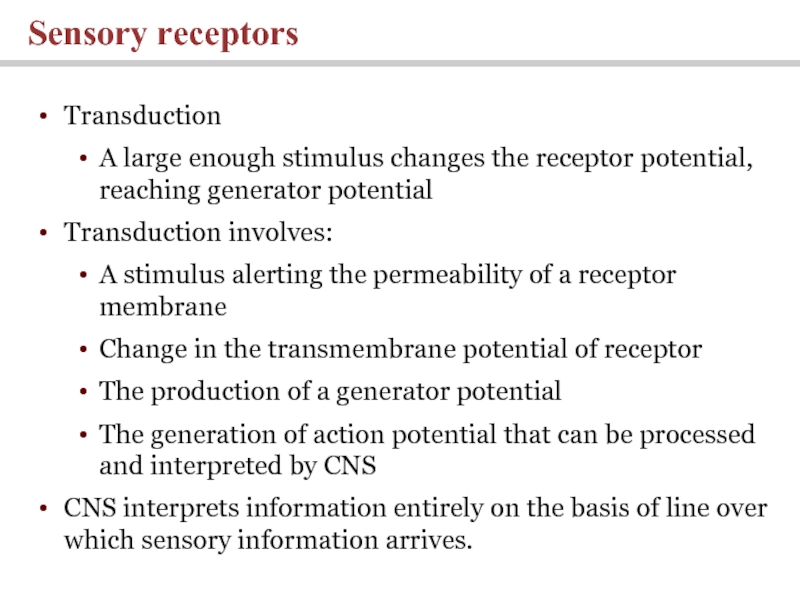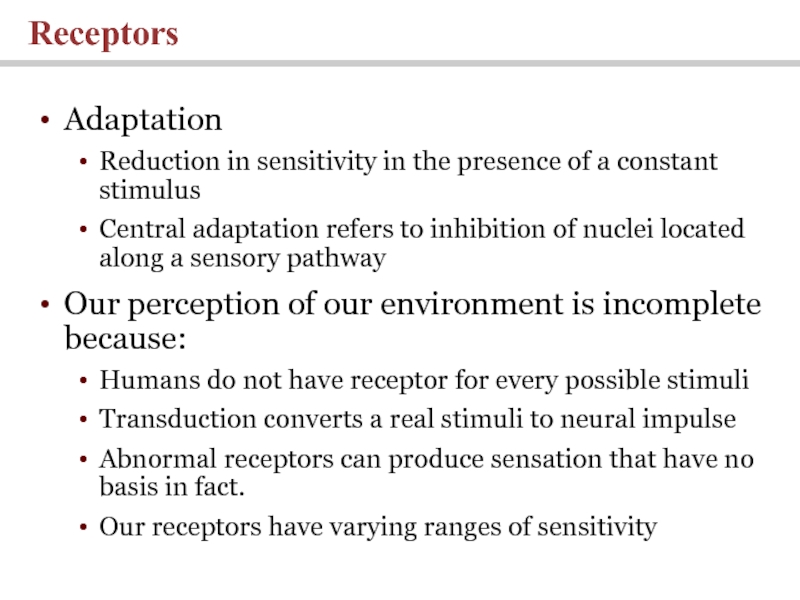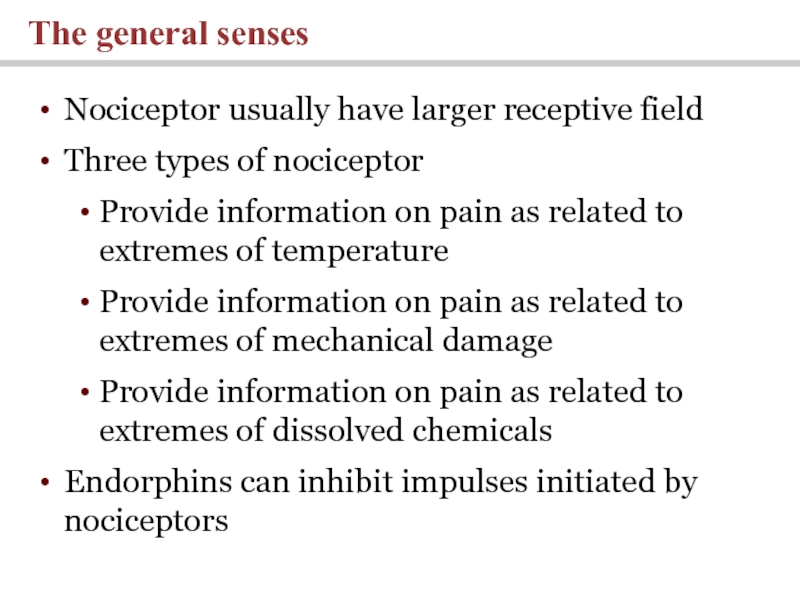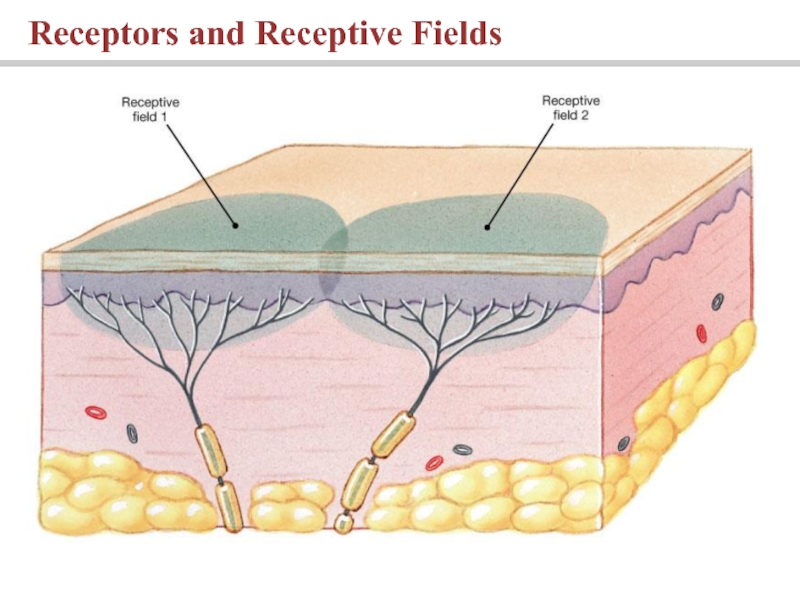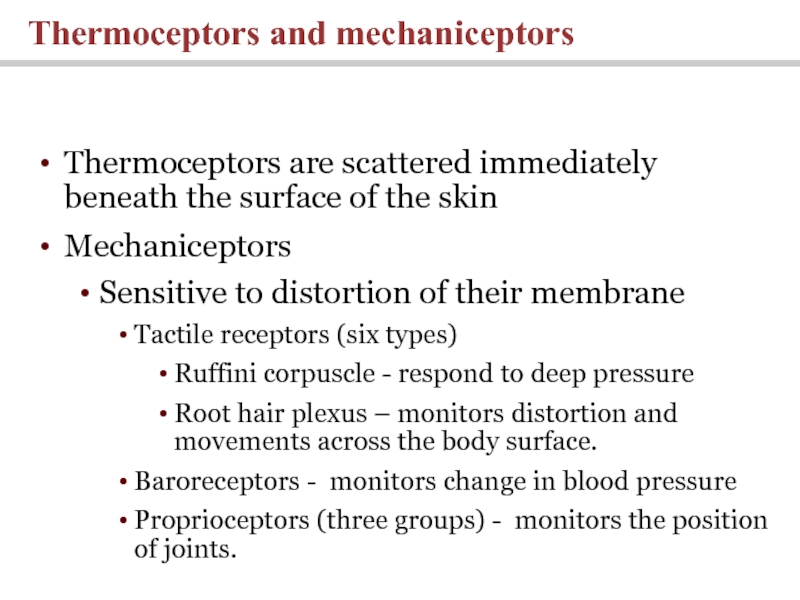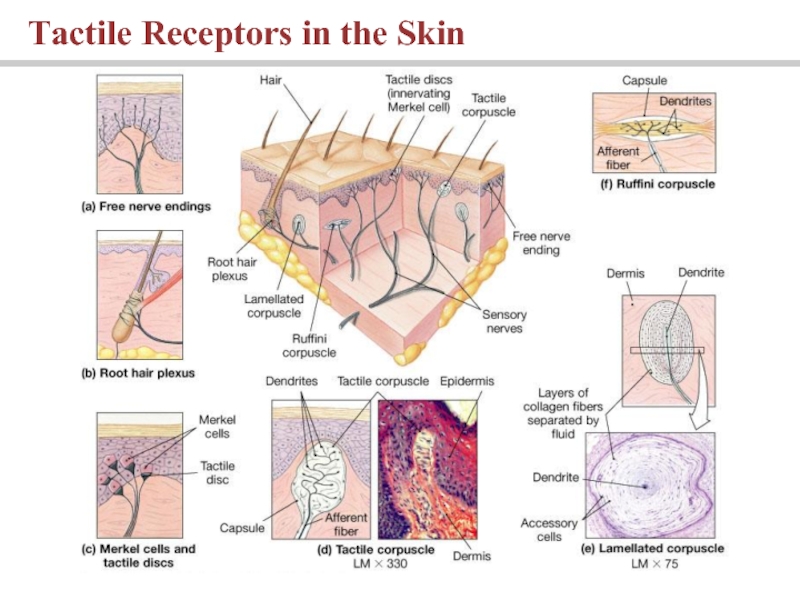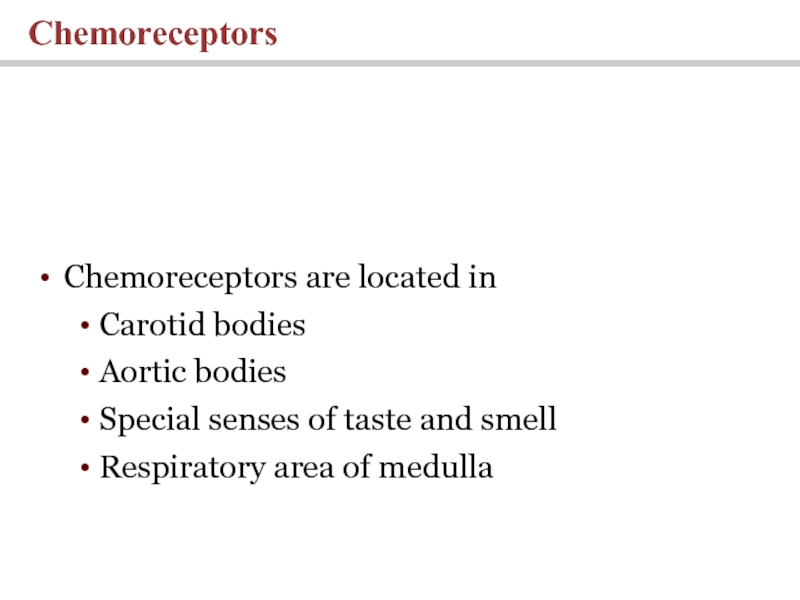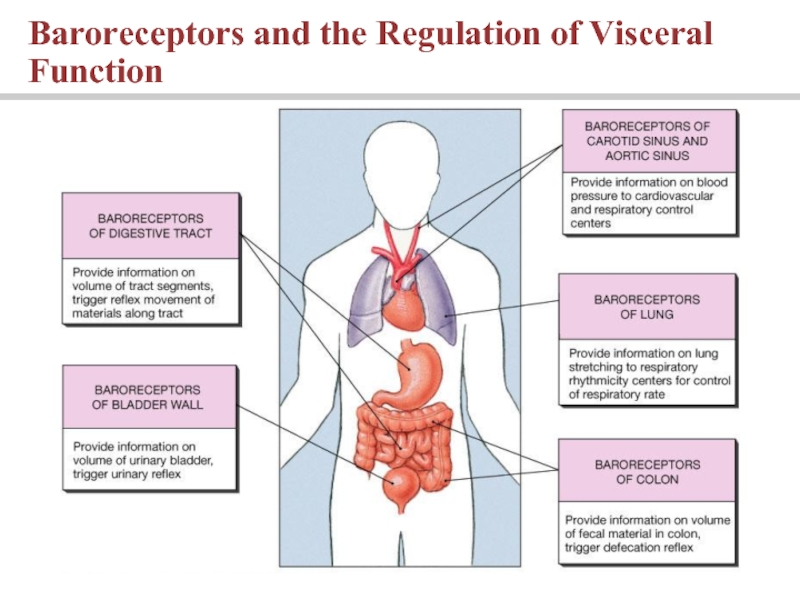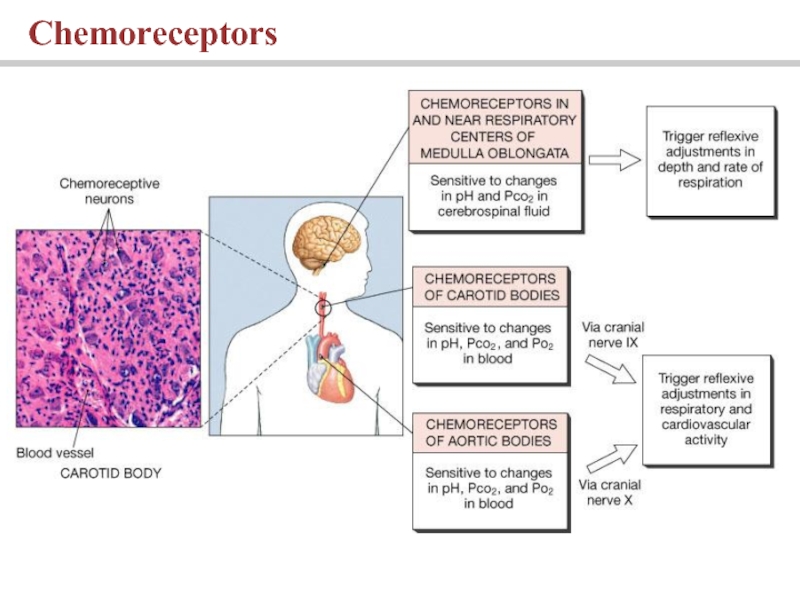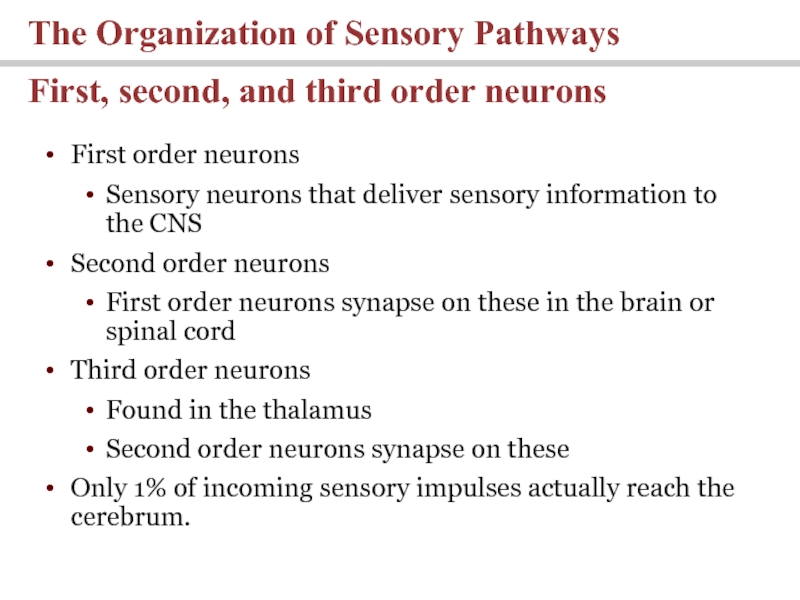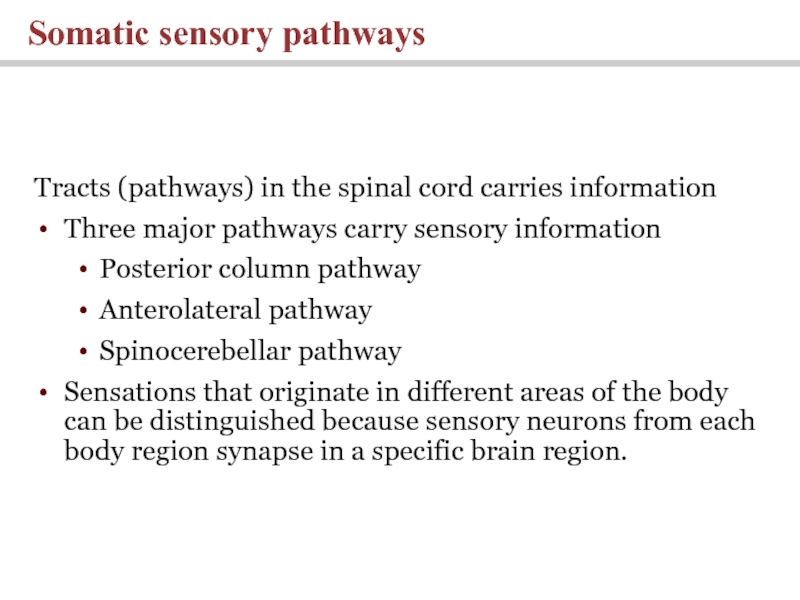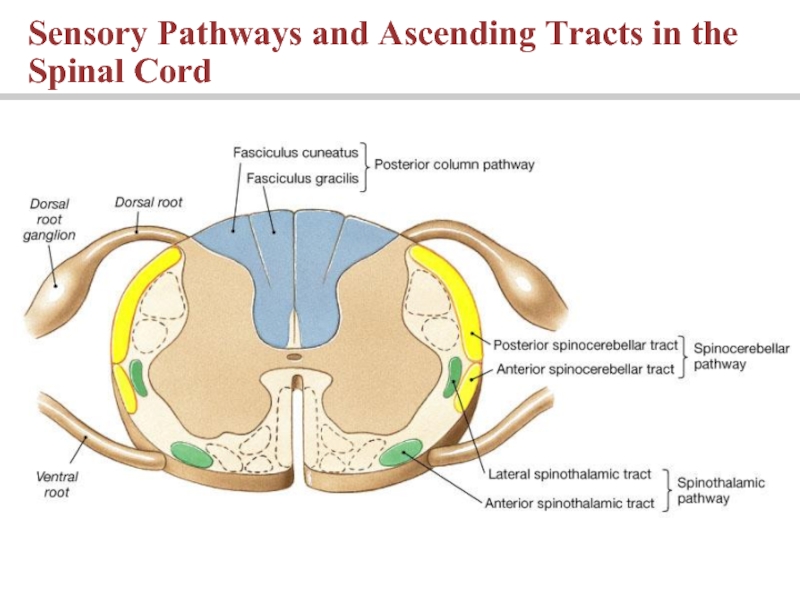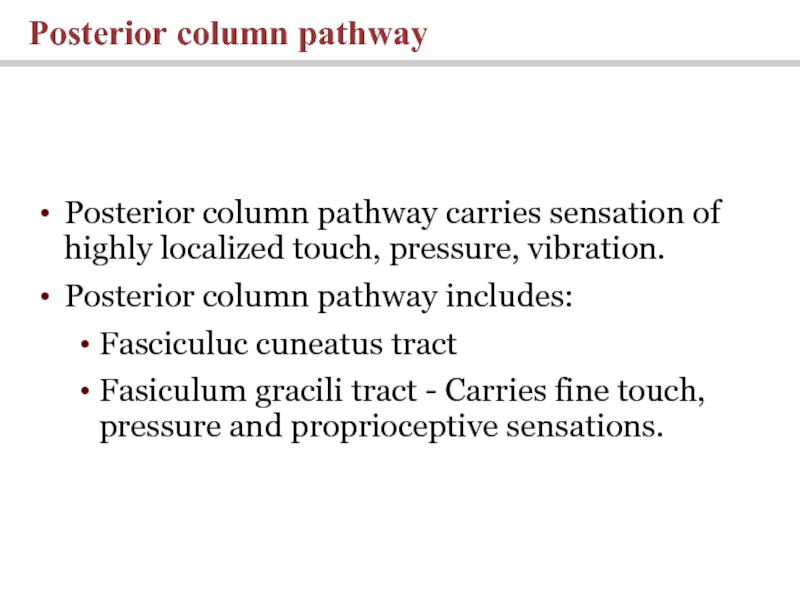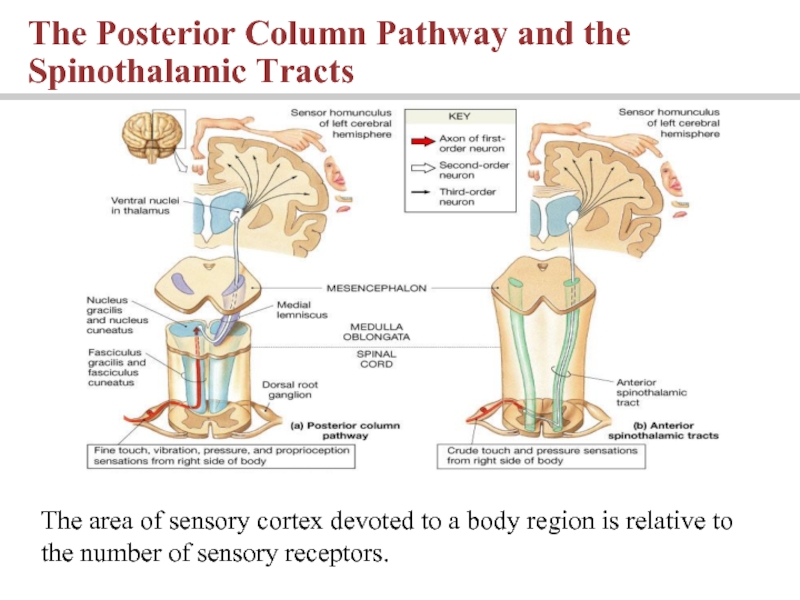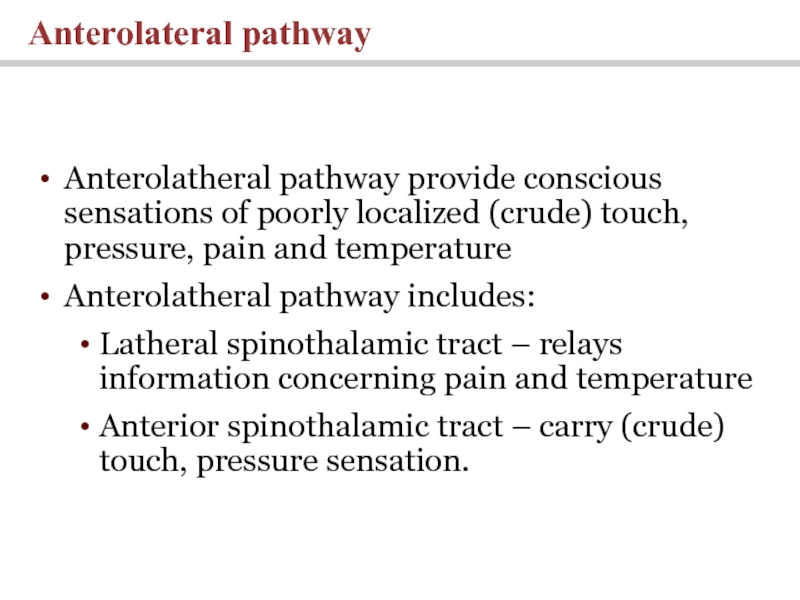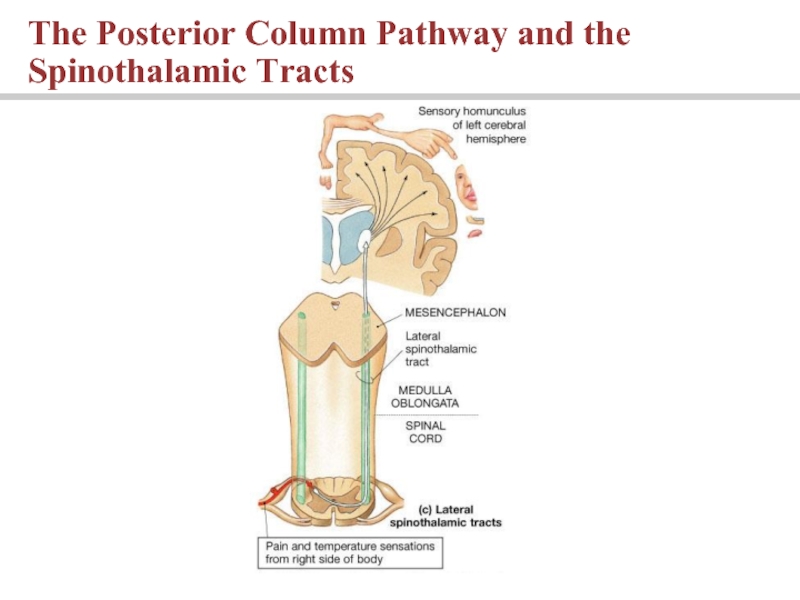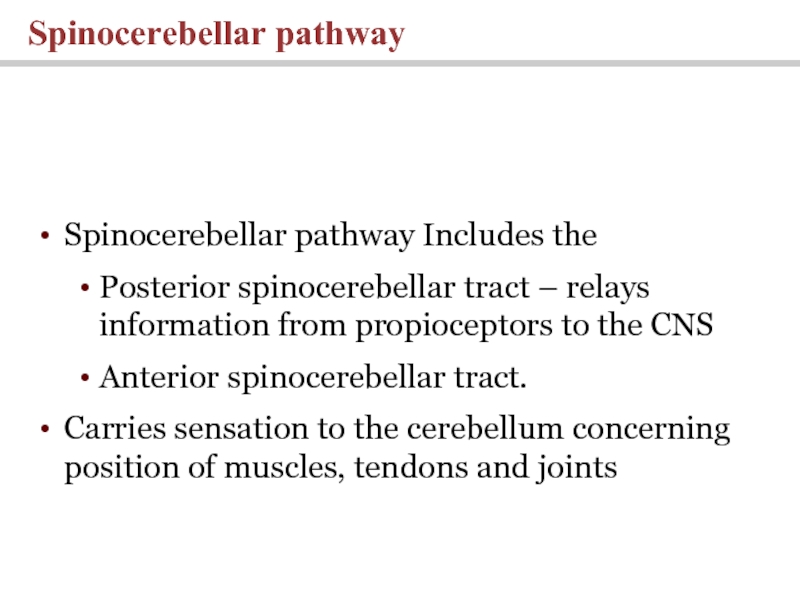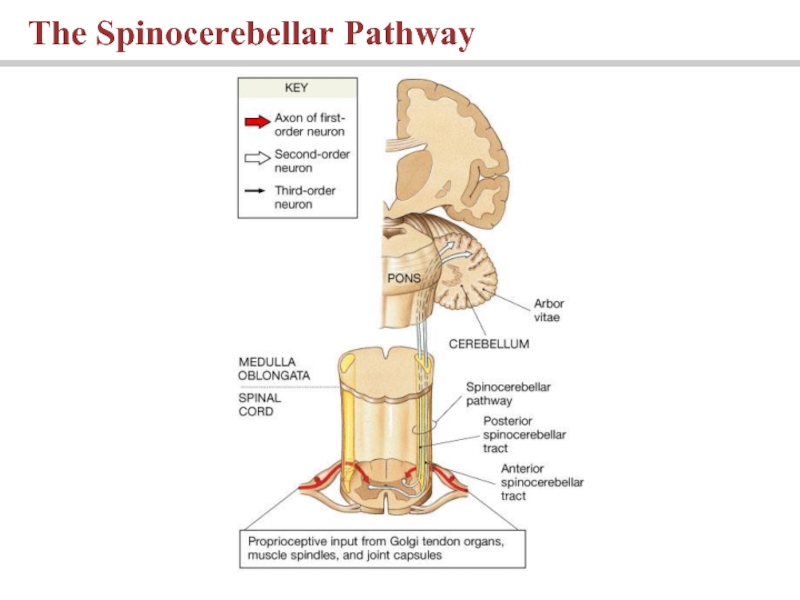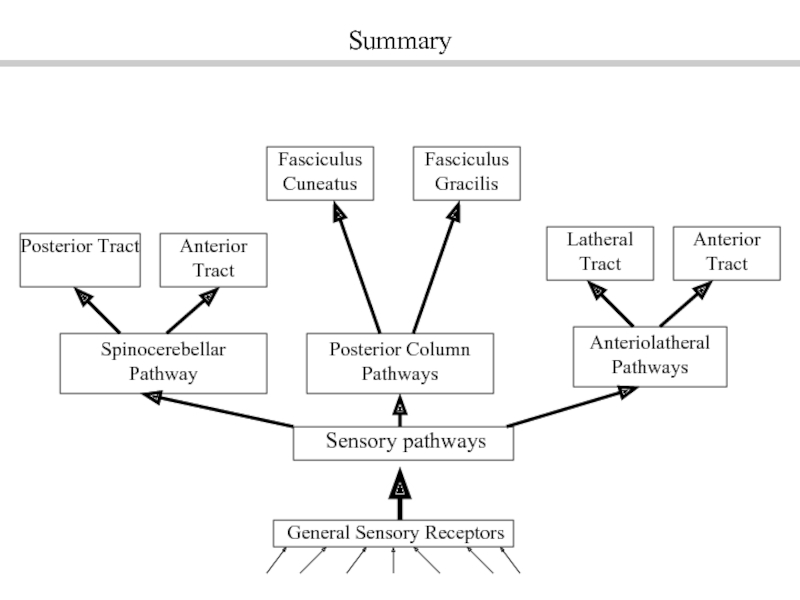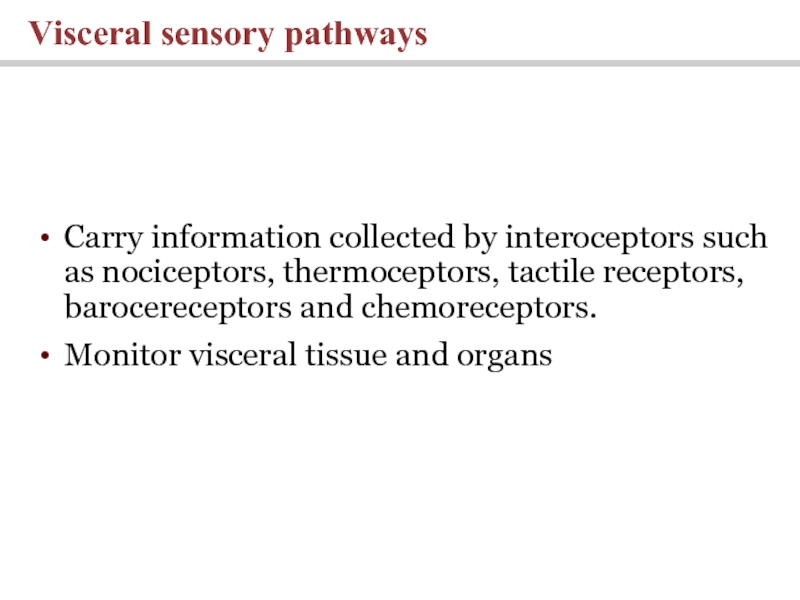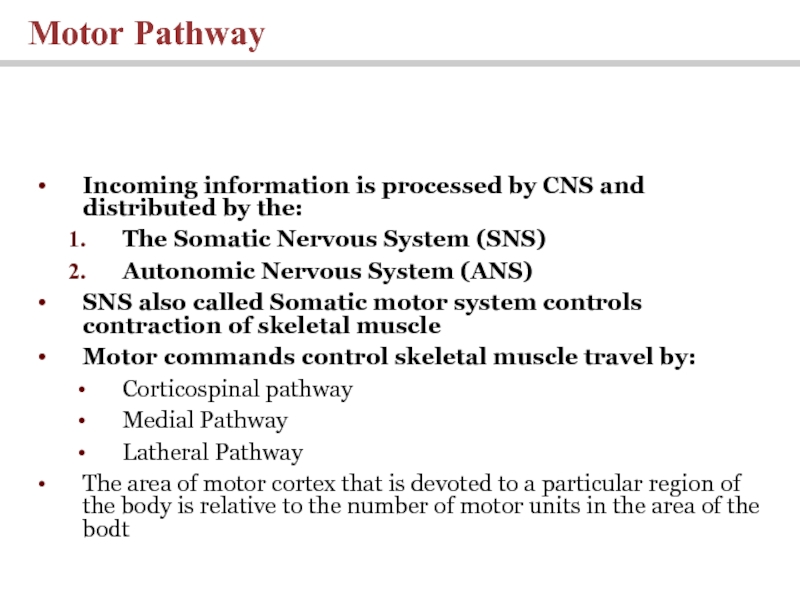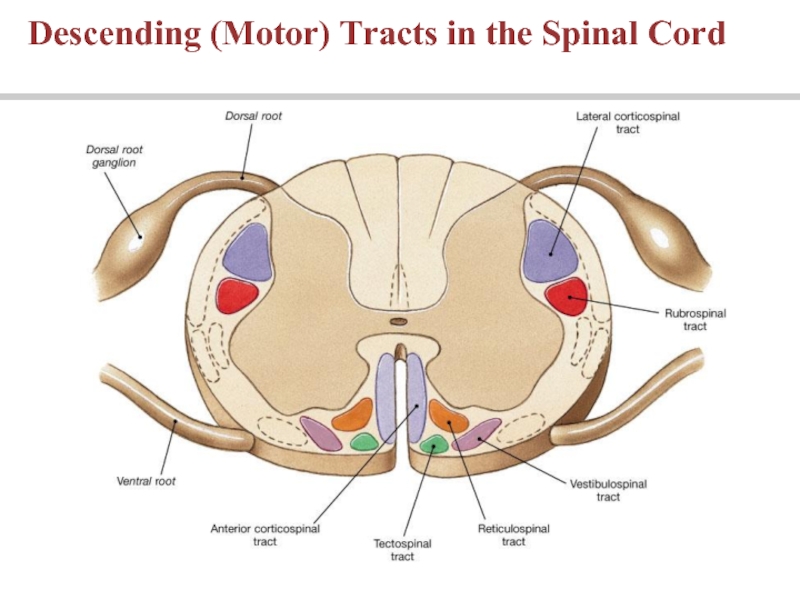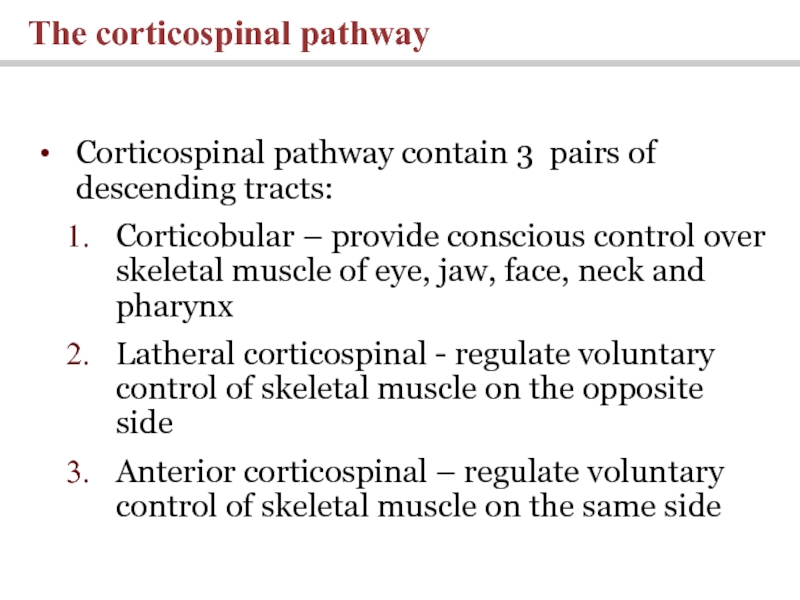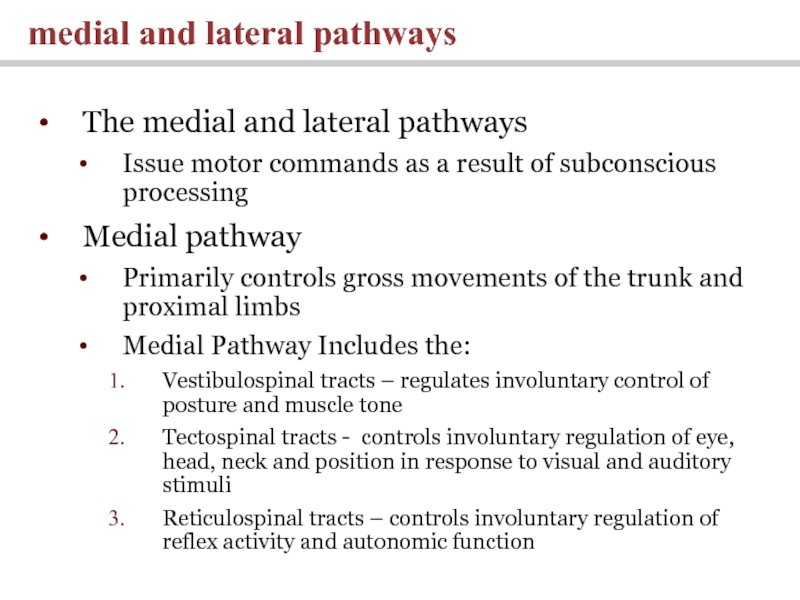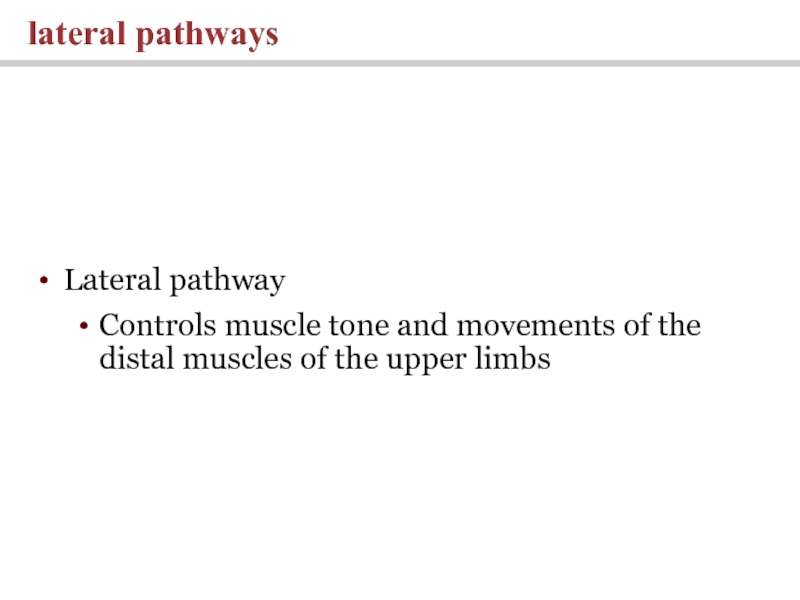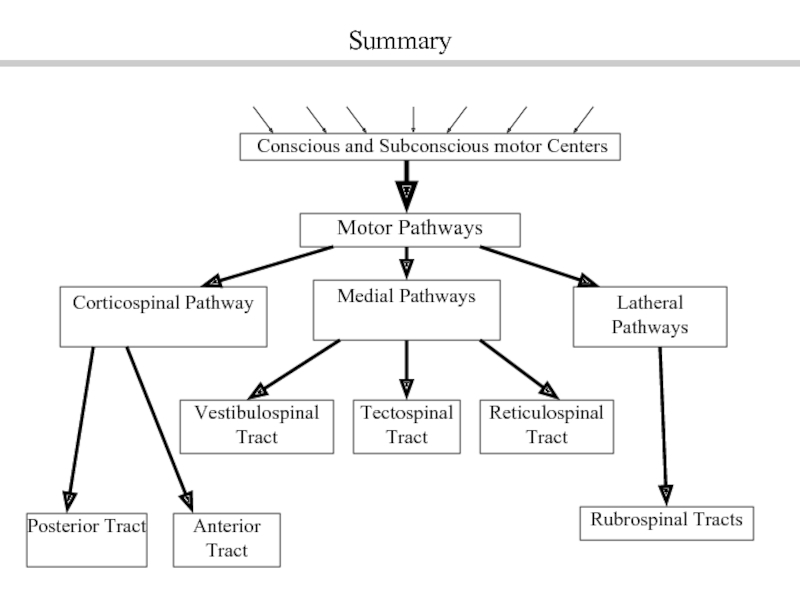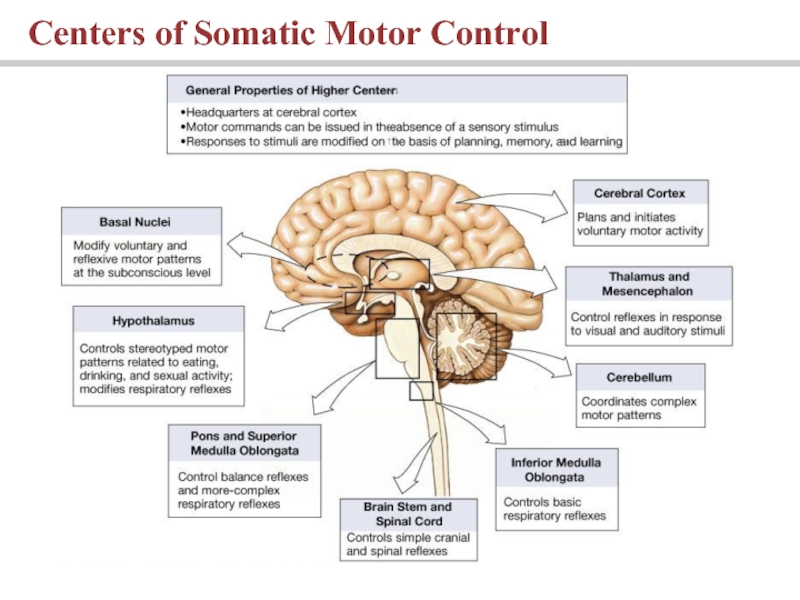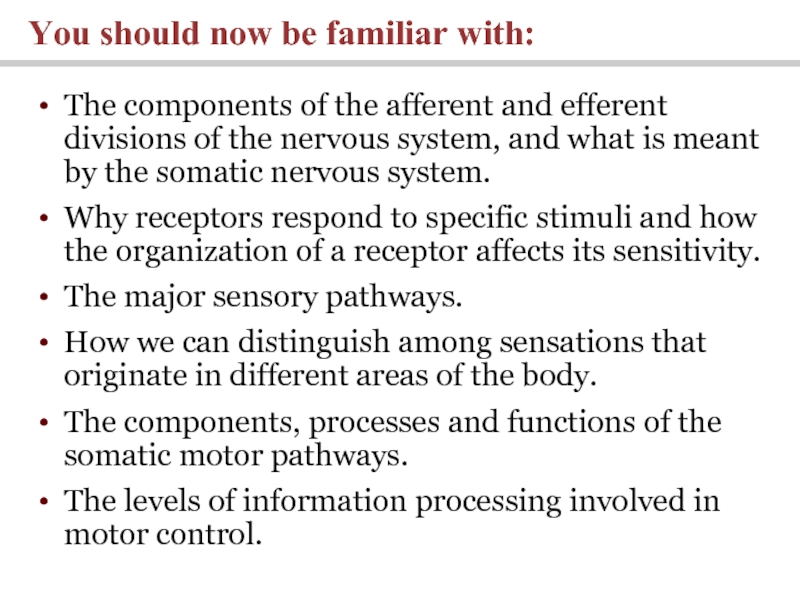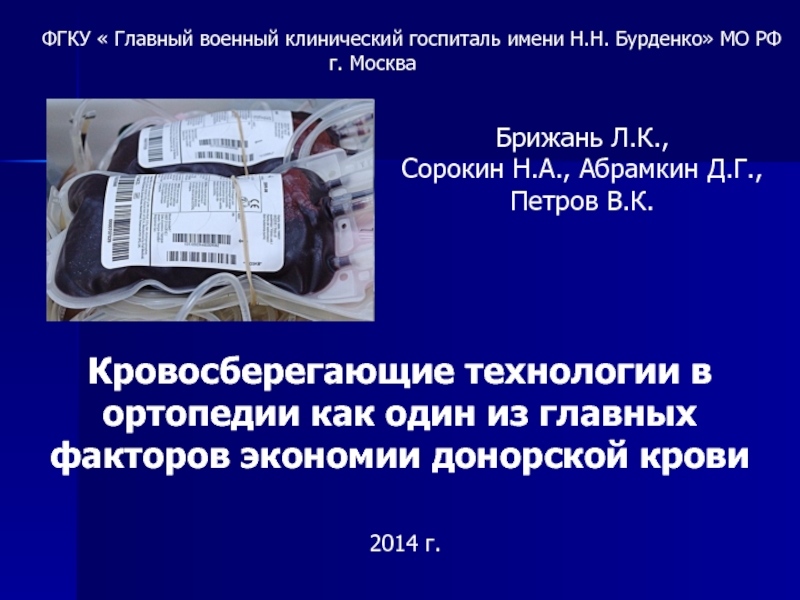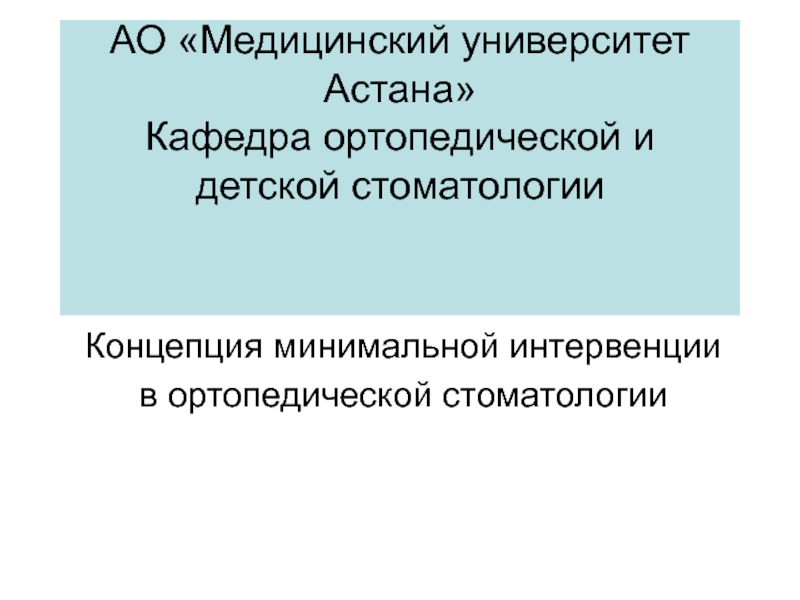- Главная
- Разное
- Дизайн
- Бизнес и предпринимательство
- Аналитика
- Образование
- Развлечения
- Красота и здоровье
- Финансы
- Государство
- Путешествия
- Спорт
- Недвижимость
- Армия
- Графика
- Культурология
- Еда и кулинария
- Лингвистика
- Английский язык
- Астрономия
- Алгебра
- Биология
- География
- Детские презентации
- Информатика
- История
- Литература
- Маркетинг
- Математика
- Медицина
- Менеджмент
- Музыка
- МХК
- Немецкий язык
- ОБЖ
- Обществознание
- Окружающий мир
- Педагогика
- Русский язык
- Технология
- Физика
- Философия
- Химия
- Шаблоны, картинки для презентаций
- Экология
- Экономика
- Юриспруденция
General physiology of receptors system. Somatic sensations: the tactile and position senses, pain, headache презентация
Содержание
- 1. General physiology of receptors system. Somatic sensations: the tactile and position senses, pain, headache
- 2. Learning Objectives Specify the components of the
- 3. Learning Objectives Explain how we can distinguish
- 4. An Overview of Sensory Pathways and the
- 5. An Overview of Neural Integration
- 6. Specialized cell or cell process that monitors
- 7. General senses involve receptors that are relatively
- 8. Each receptor cell monitors a specific receptive
- 9. Sensory receptors Transduction A large enough stimulus
- 10. Adaptation Reduction in sensitivity in the presence
- 11. Nociceptor usually have larger receptive field Three
- 12. Receptors and Receptive Fields
- 13. Thermoceptors are scattered immediately beneath the surface
- 14. Tactile Receptors in the Skin
- 15. Chemoreceptors are located in Carotid bodies
- 16. Baroreceptors and the Regulation of Visceral Function
- 17. Chemoreceptors
- 18. First order neurons Sensory neurons that deliver
- 19. Tracts (pathways) in the spinal cord carries
- 20. Sensory Pathways and Ascending Tracts in the Spinal Cord
- 21. Posterior column pathway carries sensation of highly
- 22. The Posterior Column Pathway
- 23. Anterolatheral pathway provide conscious sensations of poorly
- 24. The Posterior Column Pathway and the Spinothalamic Tracts
- 25. Spinocerebellar pathway Includes the Posterior spinocerebellar
- 26. The Spinocerebellar Pathway
- 27. General Sensory Receptors Sensory pathways
- 28. Carry information collected by interoceptors such as
- 29. Incoming information is processed by CNS and
- 30. Descending (Motor) Tracts in the Spinal Cord
- 31. Corticospinal pathway contain 3 pairs of descending
- 32. The medial and lateral pathways Issue motor
- 33. Lateral pathway Controls muscle tone and movements
- 34. Conscious and Subconscious motor Centers Motor
- 35. Centers of Somatic Motor Control
- 36. The components of the afferent and efferent
Слайд 1General physiology of receptors system. Somatic sensations: the Tactile and Position
Слайд 2Learning Objectives
Specify the components of the afferent and efferent divisions of
Explain why receptors respond to specific stimuli and how the organization of a receptor affects its sensitivity.
Identify the major sensory pathways.
Слайд 3Learning Objectives
Explain how we can distinguish among sensations that originate in
Describe the components, processes and functions of the somatic motor pathways.
Describe the levels of information processing involved in motor control.
Слайд 4An Overview of Sensory Pathways and the Somatic Nervous System
Afferent pathways
Sensory
Efferent pathways
Motor commands coming from the brain and spinal cord, through peripheral nerves to effecter organs
Neural pathways
Слайд 6Specialized cell or cell process that monitors specific conditions
Arriving information
Awareness of a sensation is a perception
Sensory Receptors and their Classification
Sensory receptor
Слайд 7General senses involve receptors that are relatively simple
Pain
Temperature
Physical distortion e.g. tissue
Chemical detection
Receptors for general senses scattered throughout the body
Special senses
Located in specific sense organs e.g. light (optical),
Structurally complex
Senses
Слайд 8Each receptor cell monitors a specific receptive field
Receptor specificity is due
The structure of receptor cell
Characteristic of receptor membrane
The function and structure of accessory cells associated with receptor
The tissue that shields the receptor from stimuli
The larger the receptor field the more dificult it would be to discriminate the exact point of stimuli
Sensory receptors
Слайд 9Sensory receptors
Transduction
A large enough stimulus changes the receptor potential, reaching generator
Transduction involves:
A stimulus alerting the permeability of a receptor membrane
Change in the transmembrane potential of receptor
The production of a generator potential
The generation of action potential that can be processed and interpreted by CNS
CNS interprets information entirely on the basis of line over which sensory information arrives.
Слайд 10Adaptation
Reduction in sensitivity in the presence of a constant stimulus
Central adaptation
Our perception of our environment is incomplete because:
Humans do not have receptor for every possible stimuli
Transduction converts a real stimuli to neural impulse
Abnormal receptors can produce sensation that have no basis in fact.
Our receptors have varying ranges of sensitivity
Receptors
Слайд 11Nociceptor usually have larger receptive field
Three types of nociceptor
Provide information on
Provide information on pain as related to extremes of mechanical damage
Provide information on pain as related to extremes of dissolved chemicals
Endorphins can inhibit impulses initiated by nociceptors
The general senses
Слайд 13Thermoceptors are scattered immediately beneath the surface of the skin
Mechaniceptors
Sensitive to
Tactile receptors (six types)
Ruffini corpuscle - respond to deep pressure
Root hair plexus – monitors distortion and movements across the body surface.
Baroreceptors - monitors change in blood pressure
Proprioceptors (three groups) - monitors the position of joints.
Thermoceptors and mechaniceptors
Слайд 15Chemoreceptors are located in
Carotid bodies
Aortic bodies
Special senses of taste and
Respiratory area of medulla
Chemoreceptors
Слайд 18First order neurons
Sensory neurons that deliver sensory information to the CNS
Second
First order neurons synapse on these in the brain or spinal cord
Third order neurons
Found in the thalamus
Second order neurons synapse on these
Only 1% of incoming sensory impulses actually reach the cerebrum.
The Organization of Sensory Pathways
First, second, and third order neurons
Слайд 19Tracts (pathways) in the spinal cord carries information
Three major pathways carry
Posterior column pathway
Anterolateral pathway
Spinocerebellar pathway
Sensations that originate in different areas of the body can be distinguished because sensory neurons from each body region synapse in a specific brain region.
Somatic sensory pathways
Слайд 21Posterior column pathway carries sensation of highly localized touch, pressure, vibration.
Posterior
Fasciculuc cuneatus tract
Fasiculum gracili tract - Carries fine touch, pressure and proprioceptive sensations.
Posterior column pathway
Слайд 22
The Posterior Column Pathway and the Spinothalamic Tracts
The area of sensory
Слайд 23Anterolatheral pathway provide conscious sensations of poorly localized (crude) touch, pressure,
Anterolatheral pathway includes:
Latheral spinothalamic tract – relays information concerning pain and temperature
Anterior spinothalamic tract – carry (crude) touch, pressure sensation.
Anterolateral pathway
Слайд 25Spinocerebellar pathway Includes the
Posterior spinocerebellar tract – relays information from
Anterior spinocerebellar tract.
Carries sensation to the cerebellum concerning position of muscles, tendons and joints
Spinocerebellar pathway
Слайд 27 General Sensory Receptors
Sensory pathways
Spinocerebellar Pathway
Posterior Column Pathways
Anteriolatheral Pathways
Posterior Tract
Anterior
Fasciculus Cuneatus
Fasciculus Gracilis
Latheral
Tract
Anterior Tract
Summary
Слайд 28Carry information collected by interoceptors such as nociceptors, thermoceptors, tactile receptors,
Monitor visceral tissue and organs
Visceral sensory pathways
Слайд 29Incoming information is processed by CNS and distributed by the:
The Somatic
Autonomic Nervous System (ANS)
SNS also called Somatic motor system controls contraction of skeletal muscle
Motor commands control skeletal muscle travel by:
Corticospinal pathway
Medial Pathway
Latheral Pathway
The area of motor cortex that is devoted to a particular region of the body is relative to the number of motor units in the area of the bodt
Motor Pathway
Слайд 31Corticospinal pathway contain 3 pairs of descending tracts:
Corticobular – provide conscious
Latheral corticospinal - regulate voluntary control of skeletal muscle on the opposite side
Anterior corticospinal – regulate voluntary control of skeletal muscle on the same side
The corticospinal pathway
Слайд 32The medial and lateral pathways
Issue motor commands as a result of
Medial pathway
Primarily controls gross movements of the trunk and proximal limbs
Medial Pathway Includes the:
Vestibulospinal tracts – regulates involuntary control of posture and muscle tone
Tectospinal tracts - controls involuntary regulation of eye, head, neck and position in response to visual and auditory stimuli
Reticulospinal tracts – controls involuntary regulation of reflex activity and autonomic function
medial and lateral pathways
Слайд 33Lateral pathway
Controls muscle tone and movements of the distal muscles of
lateral pathways
Слайд 34 Conscious and Subconscious motor Centers
Motor Pathways
Corticospinal Pathway
Medial Pathways
Latheral Pathways
Posterior Tract
Tectospinal
Reticulospinal Tract
Rubrospinal Tracts
Vestibulospinal
Tract
Anterior Tract
Summary
Слайд 36The components of the afferent and efferent divisions of the nervous
Why receptors respond to specific stimuli and how the organization of a receptor affects its sensitivity.
The major sensory pathways.
How we can distinguish among sensations that originate in different areas of the body.
The components, processes and functions of the somatic motor pathways.
The levels of information processing involved in motor control.
You should now be familiar with:
